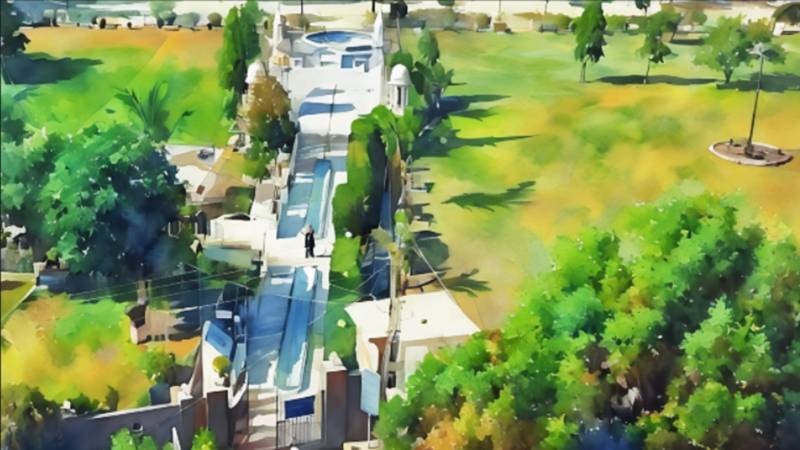
Hyderabad, the second-largest city in Sindh, is often called the "City of Birds and Winds." Known for its vibrant culture, the city combines tradition and modernity. However, despite being a major urban centre, Hyderabad suffers from a lack of quality public parks and recreational spaces.
Though Hyderabad is dubbed a "modern village," this title remains largely symbolic. The city struggles to offer the basic amenities typical of urban life, with one of the most glaring deficiencies being the absence of adequate public parks. These green spaces are essential for the well-being of the community and the environment.
Considering its size, one would expect Hyderabad to have many well-maintained parks. Unfortunately, the reality is different. The city has only a few parks, and even those suffer from poor upkeep and limited facilities.
Raanii Bagh, one of the few public parks, charges an entry fee of 50 rupees. Despite this fee, the park lacks basic amenities like jogging and walking tracks, making it less appealing for those seeking exercise and relaxation.
Askari Park, controlled by the Cantt Board, also fails to provide significant recreational facilities, limiting its use for families and individuals looking for leisure activities.
In the Qasimabad taluka, the situation is especially dire. This densely populated area, which serves as a residential and commercial hub, is severely lacking in public parks and recreational spaces. The absence of well-equipped parks with jogging and walking tracks forces residents to improvise. One such improvised space is the **Eid Gah**, a ground primarily intended for religious gatherings. While not officially designated as a park, it has become a makeshift area for exercise and leisure.
While facilities like the Gymkhana and Hyderabad Club offer parks, jogging tracks, and other recreational amenities, their memberships are prohibitively expensive. Poor and middle-class residents cannot afford access
However, the conditions at Eid Gah are far from ideal. There are no proper walking tracks, and people are compelled to walk on tiles and marble surfaces, which are not suitable for regular exercise and can pose significant risks for injuries. During peak hours, the area becomes overcrowded, further diminishing its utility as a safe and pleasant space for walking or jogging.
This lack of proper parks in Qasimabad reflects a broader neglect by the local authorities. Despite the residents' growing need for recreational spaces, the government has not taken substantial steps to develop new parks or improve existing ones. The absence of greenery and open spaces negatively impacts the quality of life, contributing to increased stress levels and a lack of communal interaction among residents.
While facilities like the Gymkhana and Hyderabad Club offer parks, jogging tracks, and other recreational amenities, their memberships are prohibitively expensive. Poor and middle-class residents cannot afford to join these clubs, leaving them without access to these well-maintained spaces.
The older parts of the city are not much better off. In Latifabad tehsil, several public parks exist but are in terrible condition. Parks like Baby Afza Park, Afzaal Ground, and Bagh-e-Qasim lack basic infrastructure and maintenance. The grass is sparse, and amenities are virtually non-existent. The Municipal Corporation's apparent lack of interest in developing and maintaining these green spaces worsens the problem.
Public parks are more than just areas for recreation; they are vital for the community's health and well-being. Parks provide spaces for physical activity, social interaction, and a break from the urban environment. They contribute to mental health, reduce pollution, and improve the overall quality of life.
The neglect of parks in Hyderabad is a significant oversight by the government. As the second-largest city in Sindh, Hyderabad should be a model for urban planning and public amenities. Instead, it highlights a broader issue of inadequate public infrastructure across the region.
Despite the current state of parks in Hyderabad, there is immense potential for improvement. A concerted effort by the government and community stakeholders could transform these neglected spaces into thriving public parks. This requires investment in infrastructure, including jogging tracks, playgrounds, and seating areas. Community engagement is also crucial, involving locals in the planning and maintenance of parks to ensure they meet the needs of residents. Adopting environmentally friendly practices in park upkeep would promote biodiversity and ecological health.
The government must recognise the importance of parks in urban settings and take immediate steps to address Hyderabad's deficiencies. Providing adequate public parks is not just a matter of aesthetics; it is essential for public health and urban living. Residents of Hyderabad must advocate for better facilities and hold authorities accountable for the development and maintenance of public parks.
In conclusion, Hyderabad's status as the second-largest city in Sindh brings the responsibility of providing its citizens with basic amenities, including well-maintained public parks. Addressing this need will not only improve residents' quality of life but also set a positive example for other cities in the region. The time for action is now, and Hyderabad's green spaces depend on it.

